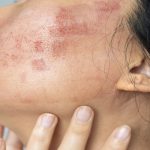Delicate skin needs special care and attention in order to keep it healthy and strong. A light skincare routine aims at reducing the irritability, reinforcing the skin barrier, and treating typical triggers such as redness, dryness and inflammation. The following evidence-based guide details the most appropriate steps to follow daily, types of products and practices to ensure that you effectively care about the sensitive skin.
Regardless of whether it is the naturally sensitive skin or a condition such as rosacea, eczema or even dryness, the appropriate routine can go a long way in alleviating the pain and enhancing the appearance of the skin.
Understanding Sensitive Skin
Sensitive skin does not constitute a medical diagnosis but instead is a symptom and is being more responsive to environmental or product sensitivity. Common symptoms include:
- Redness (erythema)
- The burning or paining sensations.
- Dryness and flaking
- Itching or tightness
Common causes of sensitivity:
- Weakened skin barrier: A weakened skin barrier is one where the penetration of irritants and allergens is made easier.
- Triggers in the environment: Environmental triggers may include pollution, UV exposure, heat and cold.
- Crude or inappropriate products: The most widespread irritants of skincare products are fragrances, alcohol, and sulfates.
- Medical diseases: Some medical conditions such as eczema, rosacea and psoriasis usually have sensitive skin.
Essential Steps for a Gentle Skincare Routine
1. Choose a Mild Cleanser
Cleansing is crucial to remove dirt, oil, and pollutants, but harsh cleansers can strip the skin’s protective barrier.
- What to look for:
- Fragrance-free, sulfate-free, and pH-balanced formulas
- Creamy or gel-based cleansers for hydration
- Ingredients like glycerin, ceramides, or oat extract for soothing
- What to avoid:
- Foaming cleansers with sulfates (SLS, SLES)
- Scrubs or exfoliating cleansers
Example routine:
Morning and evening, gently massage the cleanser onto damp skin with your fingertips and rinse with lukewarm water (avoid hot water, as it can worsen irritation).
2. Moisturize Immediately After Cleansing
Moisturizing helps restore the skin’s barrier and lock in hydration. Sensitive skin benefits from simple, non-comedogenic moisturizers with barrier-repairing ingredients.
- What to look for:
- Ceramides, hyaluronic acid, squalane, and glycerin for hydration
- Niacinamide for calming redness and irritation
- Shea butter or colloidal oatmeal for soothing
- What to avoid:
- Strong fragrances or essential oils
- Alcohol-based products
Example routine:
Apply moisturizer within 1–2 minutes of cleansing to seal in moisture. Use a lighter formula in the morning and a richer cream at night.
3. Apply Sunscreen (AM Routine)
Sunscreen is a must for all skin types, but it’s especially important for sensitive skin to protect against UV-induced inflammation and redness.
- What to look for:
- Mineral/physical sunscreens (zinc oxide, titanium dioxide) for less irritation
- Broad-spectrum formulas with SPF 30 or higher
- What to avoid:
- Chemical sunscreens with oxybenzone or avobenzone, which may irritate sensitive skin
- Added fragrances or alcohol
Example routine:
Apply sunscreen as the final step in your morning routine, about 15 minutes before sun exposure. Reapply every 2 hours when outdoors.
4. Use a Gentle Hydrating Toner or Mist (Optional)
Hydrating toners or mists can soothe sensitive skin and prepare it for better absorption of moisturizers and treatments.
- What to look for:
- Aloe vera, chamomile, or rose water for calming effects
- Panthenol (pro-vitamin B5) for hydration
- What to avoid:
- Astringents like witch hazel or alcohol
Example routine:
Spritz a hydrating mist or pat a gentle toner onto the skin after cleansing, morning and evening.
5. Add Targeted Treatments (As Needed)
If you’re addressing specific concerns like redness, dryness, or irritation, choose treatments with minimal but effective ingredients.
- For redness or irritation:
- Azelaic acid (gentle anti-inflammatory and anti-redness properties)
- Niacinamide (calms redness and strengthens the barrier)
- For dryness or flaking:
- Hyaluronic acid or urea for hydration
- Ceramide-rich serums to repair the barrier
- What to avoid:
- Retinoids, unless prescribed and introduced gradually
- Strong acids like glycolic acid or salicylic acid
Example routine:
Apply treatments after toner and before moisturizer. Use only in the evening if the product increases sun sensitivity.
6. Nighttime Routine: Focus on Repair
At night, the skin repairs itself, so your routine should focus on providing nutrients and hydration.
- Cleanse gently to remove makeup and dirt.
- Apply a soothing serum or treatment if needed.
- Use a rich moisturizer or sleeping mask to hydrate overnight.
Additional Tips for Sensitive Skin
- Patch-test new products: Always test new products on a small area of skin (e.g., behind the ear) to check for reactions.
- Limit product layering: Overloading your skin with too many products can increase sensitivity. Stick to a simple routine.
- Avoid frequent exfoliation: Once a week, use a gentle exfoliant like lactic acid if needed, but avoid scrubs or harsh peels.
- Use lukewarm water: Both hot and cold water can aggravate sensitive skin.
- Protect against environmental irritants: Use a scarf or hat in harsh weather and consider a humidifier in dry climates.
Recommended Product Types for Sensitive Skin
While specific products vary, here are some dermatologist-approved examples of product types:
- Cleanser: Milky or gel-based, fragrance-free (e.g., Cetaphil Gentle Skin Cleanser)
- Moisturizer: Ceramide-based (e.g., CeraVe Moisturizing Cream)
- Sunscreen: Mineral-based SPF (e.g., EltaMD UV Clear Broad-Spectrum SPF 46)
- Treatment: Niacinamide serums (e.g., La Roche-Posay Toleriane Ultra Dermallergo Serum)
When to Seek Professional Advice
In case of being topped with constant reddening, edema or pains, see a dermatologist when your delicate skin is involved. By analyzing hidden factors such as rosacea, eczema, allergies, they will be able to prescribe medical-grade solutions that will suit the needs of your skin.
Conclusion
Sensitive skin needs a soft skincare routine to decrease irritation, build a strong barrier, and have a healthy and relaxed complexion. With the selection of fragrance-free, soothing products and a plain daily routine, you would be able to care about your sensitive skin and prevent usual triggers. Also keep in mind to patch-test new products and seek professional help regarding persistent problems.



